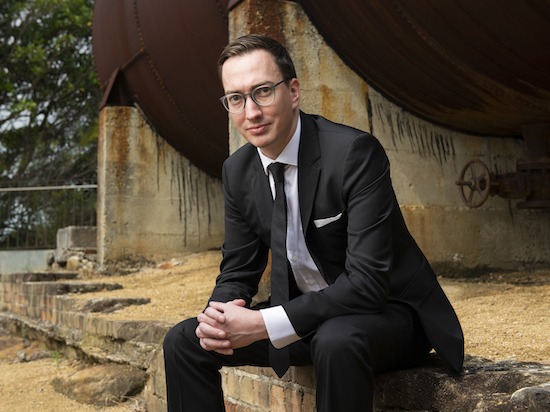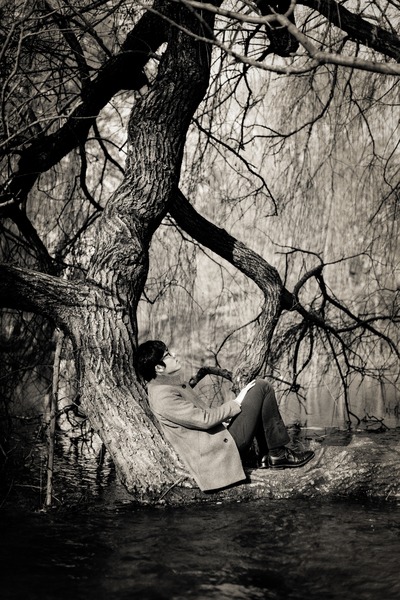At the Nashville Symphony
The Chestnuts Have Their Day at the Schermerhorn
On Saturday, January 21, 2023 the Nashville Symphony gave a splendid performance of three chestnuts: Samuel Barber’s Adagio for Strings, Sergei Rachmaninoff’s Second Piano Concerto and Pyotr Ilyich Tchaikovsky’s Fourth Symphony. In this rather conservative (for Nashville) program, the ensemble was led by Associate Conductor Nathan Aspinall and joined by 2009 Van Cliburn winner and internationally celebrated soloist Haochen Zhang on piano.

The evening opened with the Barber, and it was marvelous. Barber, a wunderkind, was born into a very well to do family born in my hometown of West Chester, PA. He went on to study at the Curtis Institute in Philadelphia, where he developed an intimate relationship with Gian Carlo Menotti that would last more than 40 years. Written while he and Menotti were visiting St. Wolfgang, a small market town just outside Salzburg, Austria, the Adagio is perhaps Barber’s most famous piece. In performance, Maestro Aspinall has a very detailed approach, but also gives attention to the large, sweeping gestures; a sine qua non for any successful performance of this famous lament. At the end, the moment was appropriately quite heavy, and I wondered if Zhang might be able to lift us up for Rachmaninoff’s masterwork.
Rachmaninoff’s Second Concerto was a hard-fought masterpiece for the great Russian pianist and composer. Coming off the epic failure of his First Symphony, he was suffering from writer’s block, depression, doubts that we would certainly call imposter syndrome today, and a group of important, but quite critical admirers including the great Russian composer César Cui. A friend of his family sent him to Nikolai Dahl who specialized in hypnotherapy. Through a period of affirming treatments, (the phrases used in trance were: “You will begin to write your concerto … You will work with great facility … The concerto will be of an excellent quality”) Rachmaninoff began to compose again and the piece found a premiere in November of 1901. It has since, rightly held an important place in the virtuoso piano repertoire.

Zhang began the piece—those famous, stirring, dark chords, with an exuberance and enthusiasm that was infectious. As the orchestra entered the I realized the wisdom of Aspinal’s programming. Zhang would help us to climb out of Barber’s sad gloom. My favorite part was the second movement, with the interaction between Zhang and the woodwinds, supported by the circulating arpeggio. After the blistering final movement’s cadenza, and the sharp final chords, the audience absolutely leapt to their feet. After several minutes of ovation, Zhang returned to the bench and gave us an encore with a Chinese Folk melody in honor of the lunar new year. Thank goodness for intermission because emotionally, I was spent and needed to regroup!
After the break, Maestro Aspinall tucked into Tchaikovsky’s fourth, sometimes called “The Fate” after the famous horn motive that opens the first movement. Tchaikovsky, who was homosexual, had finished this composition just after the failure of his disastrous marriage to a woman. He himself described the first movement and its relationship to fate as “…the fatal power which prevents one from attaining the goal of happiness….” Given the homophobia that Tchaikovsky had to deal with throughout his life, one would expect the movement to end with calamity, but instead, it is victorious.
In Nashville, where we have a horn section that can compete with nearly anyone, the motive was terrifying and awesome. Aspinall showed a huge measure of patience, slowly allowing Tchaikovsky’s melody develop across the orchestra in bits and pieces, gradually assembling into this huge movement (the movement lasts nearly as long as the other three movement combined). The second movement brings back the primary theme of the first, but in a gentle oboe solo which was played with a fantastic velvety tone by Titus Underwood.
Toward the end of the movement a light broke in through the woodwinds and all the gloomy gravitas that had rule the concert to this point emerged into a beautiful sunrise in the strings. Leave it to Tchaikovsky to create the perfect contrast to fate. This led to the sylvan (think Mendelsohn’s fairies) pizzicato third movement. Smiles could be seen across the orchestra and the sounds danced across the stage. Finally, the vigorous, forceful last movement, casting the gloomy fate motive aside, brought the evening to a triumphant end.
Other critics, even perhaps myself at a younger age, might criticize this kind of programming (a group of three famous chestnuts) as conservative and not engaging with contemporary expression. However, I disagree. First, the Nashville Symphony in my opinion, has done its share of contemporary programming and has numerous Grammy Awards to account for it. Second, one might criticize this music as irrelevant, important only to a lost culture, and disconnected from the politics of identity and our modern goals for diversity and inclusion. However, listening to these masterpieces by composers, not as “dead white men” but as humans with hidden and invisible illnesses, doubts and trials, a worthy story of resilience begins to emerge. As I looked around at the packed, seemingly sold-out hall, with nearly 2 thousand people of every age engaging in the standing ovation, I am sure that some were considering that, and I bet others weren’t. In the end, I believe that in artistic appreciation of the masterpiece we can be selfish, and draw what we wish…this is what makes it a masterpiece.



